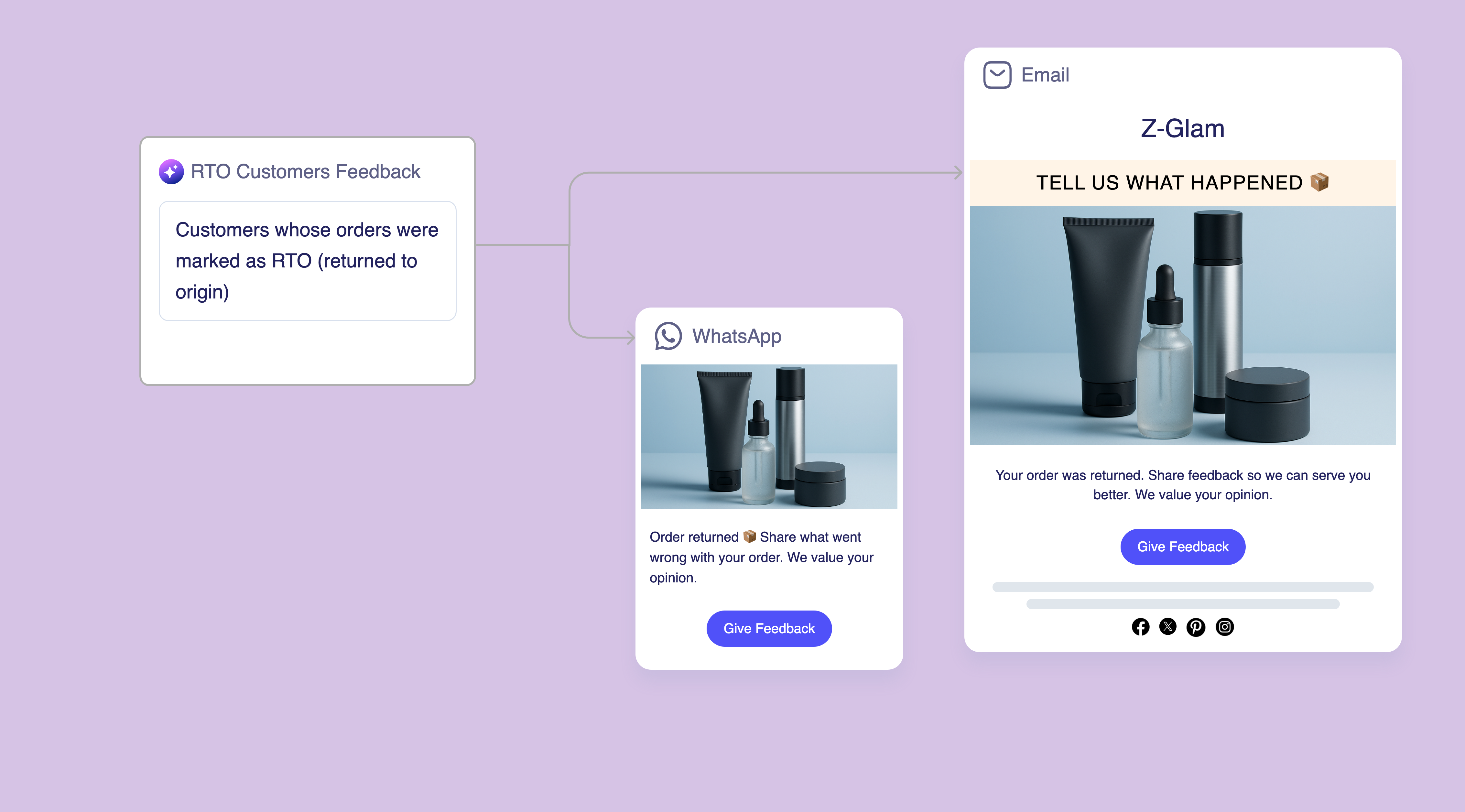
RTO Feedback Survey
Improve fulfillment by collecting feedback from customers whose orders were returned to understand delivery failure reasons.

What is an RTO Feedback Survey?
An RTO (Return to Origin) Feedback Survey is a campaign sent after a failed COD delivery to understand the customer’s reason for not accepting the order. By gathering structured feedback, brands can spot patterns, like address errors, delayed deliveries, or payment concerns, and take corrective action. This helps lower RTO rates, save logistics costs, and improve customer experience.
Why RTO Feedback Surveys Matter?

Challenges

Opportunities
Outcomes
Better Understanding of Delivery Failure Causes
Improved Fulfillment Process Optimization
Reduced Future RTO Incidents
Who is it for?
Audience
Exclusions
How it Plays Out
A sample sequence for this use case.
Help us do better next time! Why was your order undelivered? Share your feedback → [CTA]
Sorry your order didn't make it. Can you tell us why? Tap here to share → [Link]
Quick survey: Help us improve our delivery process → [Give Feedback]
Last chance to help us serve you better - share your delivery experience → [Submit Feedback]
Best Practices
- Keep surveys brief and focused on actionable delivery insights rather than lengthy satisfaction questionnaires.
- Offer multiple choice options for common RTO reasons while allowing open-ended feedback for specific issues.
- Follow up on feedback when possible to show customers their input drives real improvements.
RTO Feedback Survey Examples & Prompts
Channel Examples
Automate with Zenie Prompts
With Zenie, you can automatically trigger feedback collection when orders are marked as returned.
Explore Similar eCommerce Marketing Strategies
FAQs
What specific questions should RTO feedback surveys include?
Focus on delivery attempt timing, address accuracy, customer availability, delivery instructions, and any communication issues. Include options for common problems like "wasn't home," "wrong address," or "delivery person didn't call" alongside open-ended feedback.
Should RTO surveys be sent immediately after return or after some delay?
Send surveys within 24-48 hours of RTO marking while the delivery experience remains fresh in customers' minds. Immediate feedback typically provides more accurate and detailed insights than delayed surveys.
How do you encourage participation in RTO feedback surveys?
Keep surveys very short (2-3 questions), explain how feedback improves future deliveries, and consider small incentives like discount codes for completed responses. Frame participation as helping improve service for everyone.
What should businesses do with RTO feedback once collected?
Analyze feedback for patterns, share insights with delivery partners, update delivery processes based on common issues, and follow up with individual customers when specific problems can be resolved.
How do you measure RTO feedback survey effectiveness?
Track survey response rates, actionable insights generated, delivery process improvements implemented, and overall RTO rate reduction over time. Monitor whether feedback collection leads to measurable fulfillment improvements.


